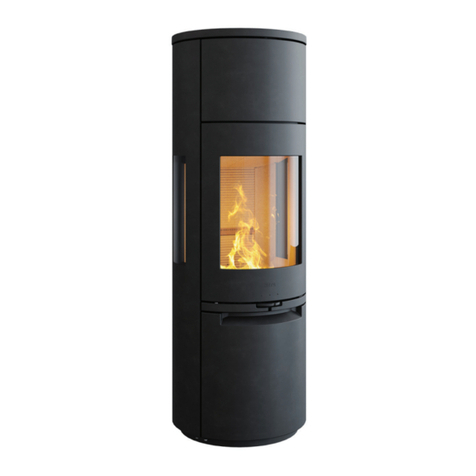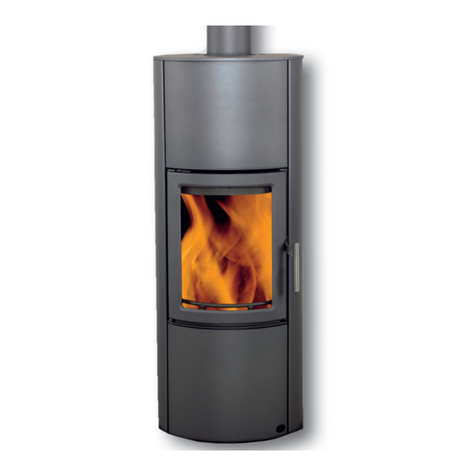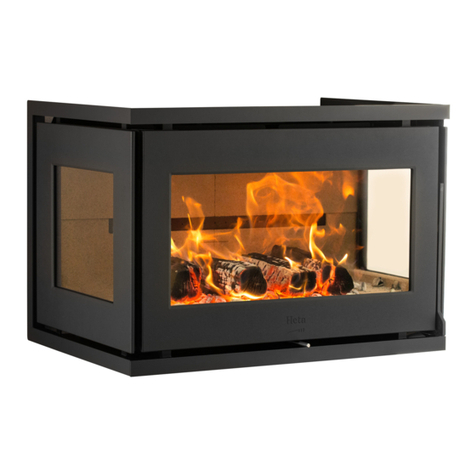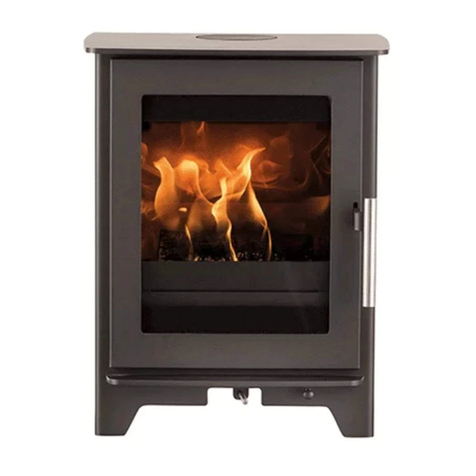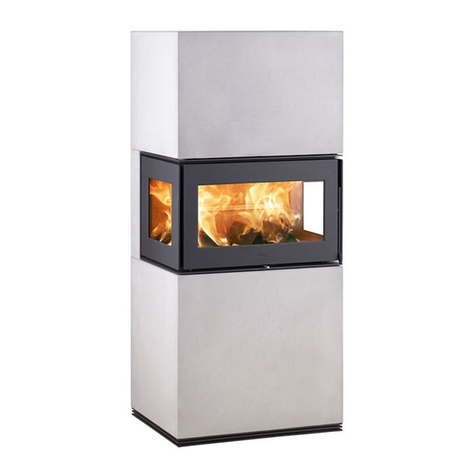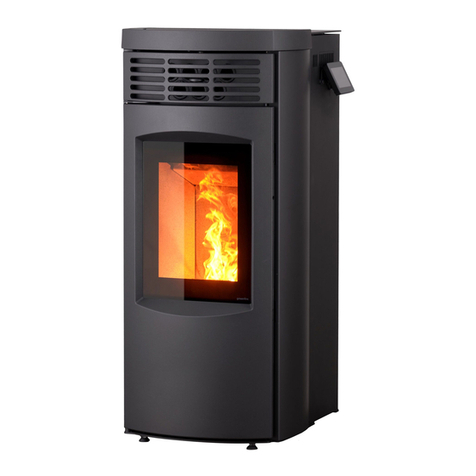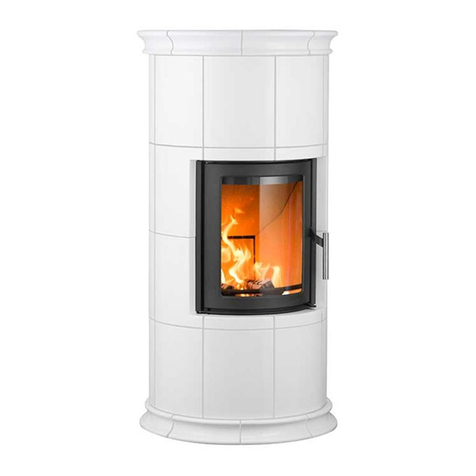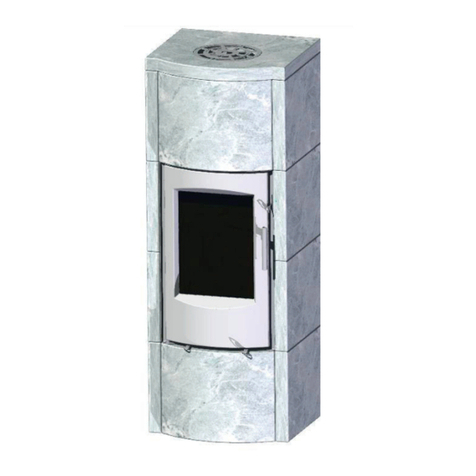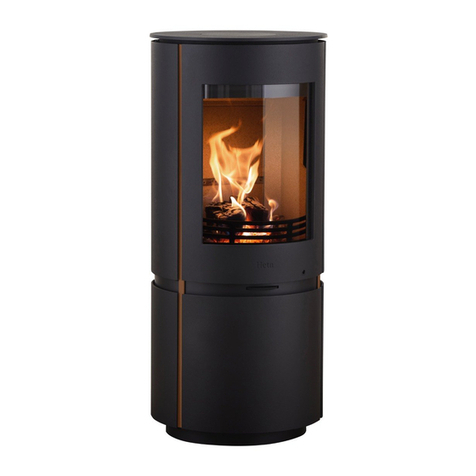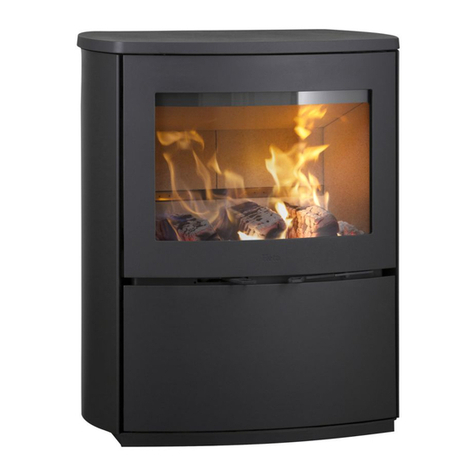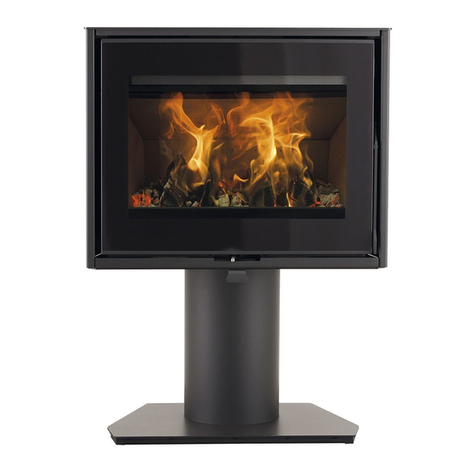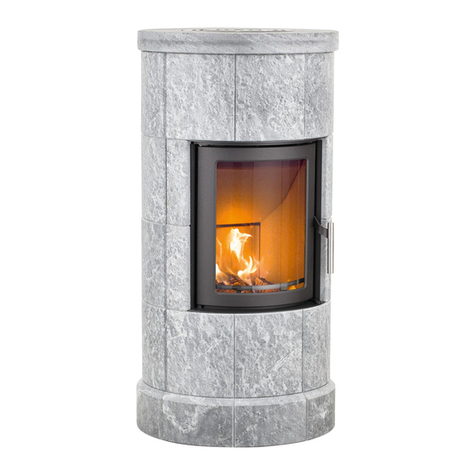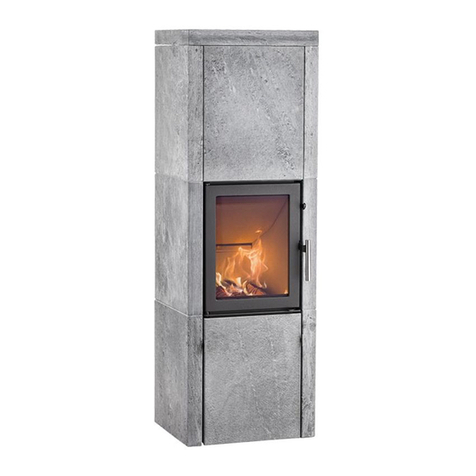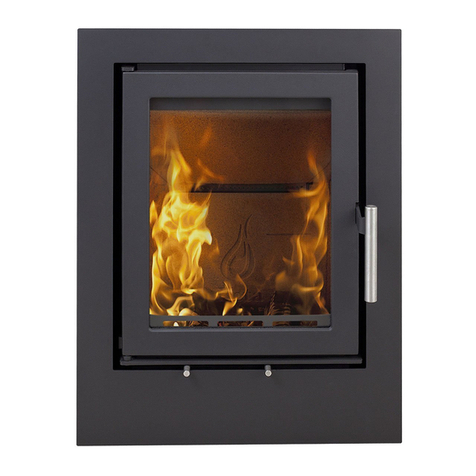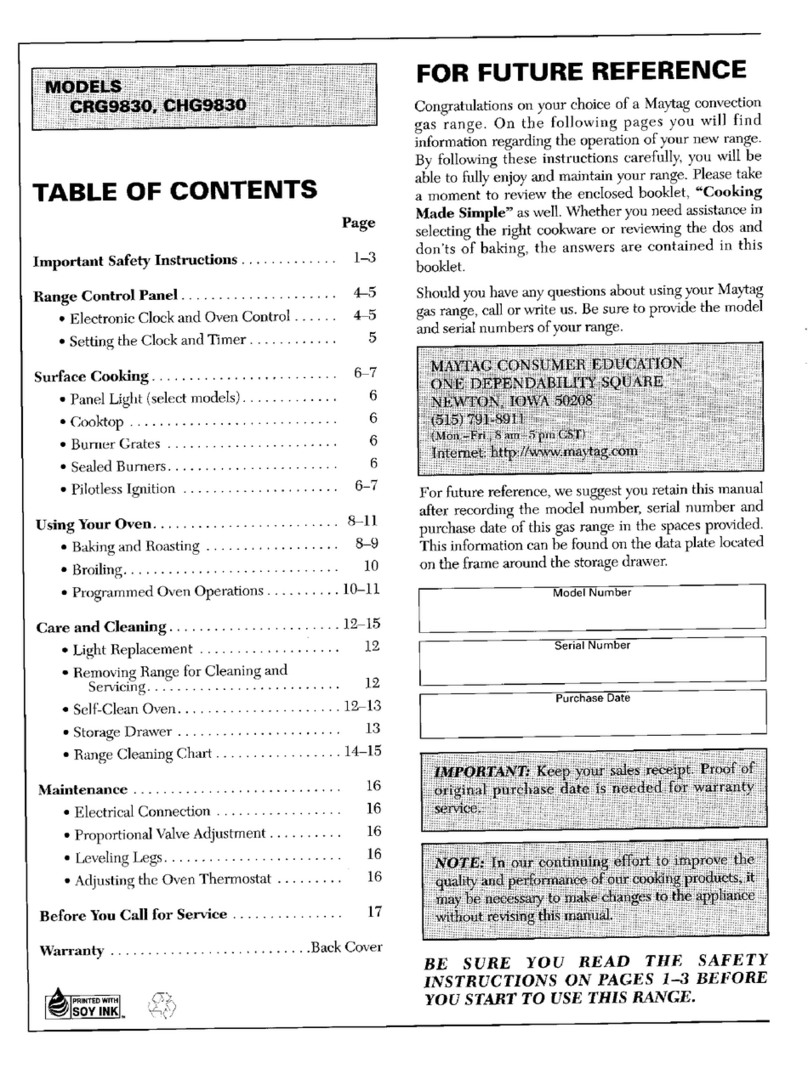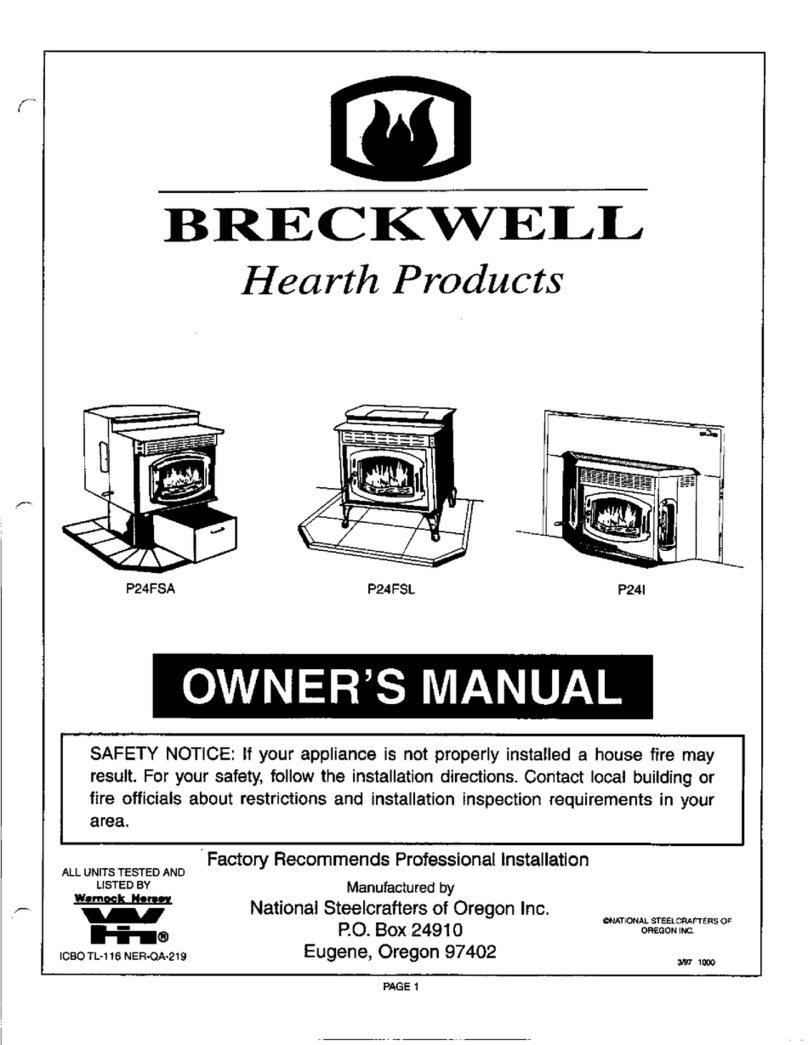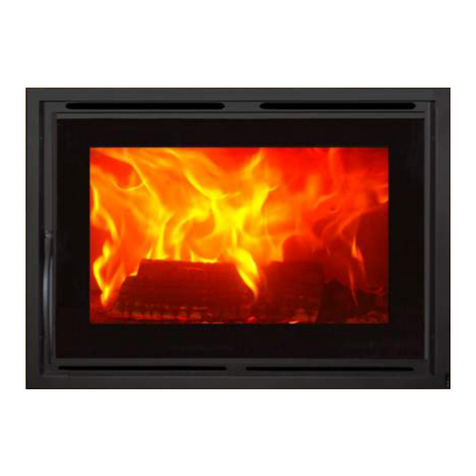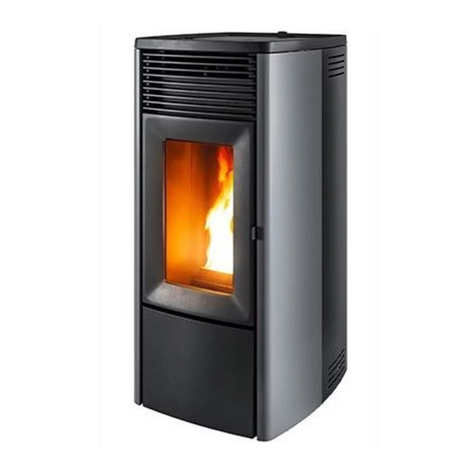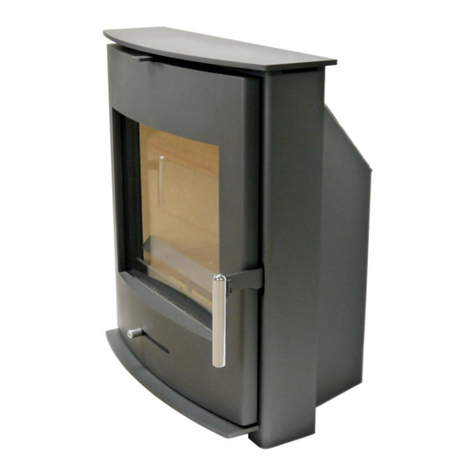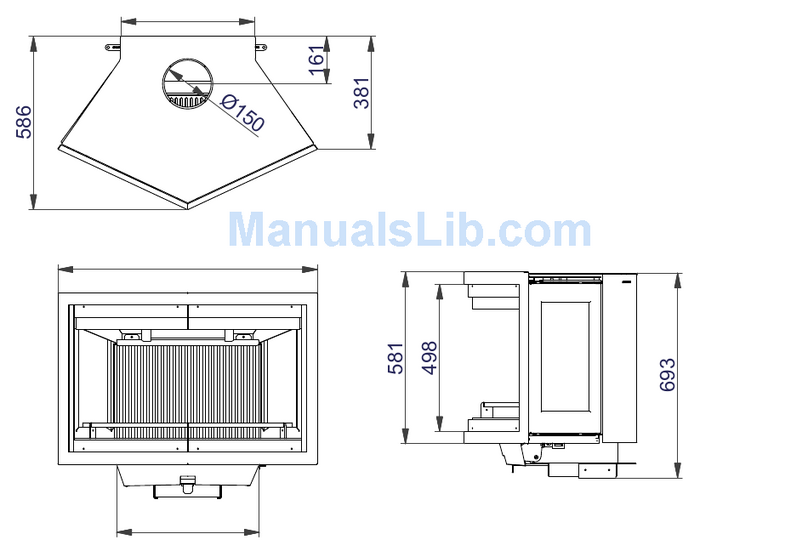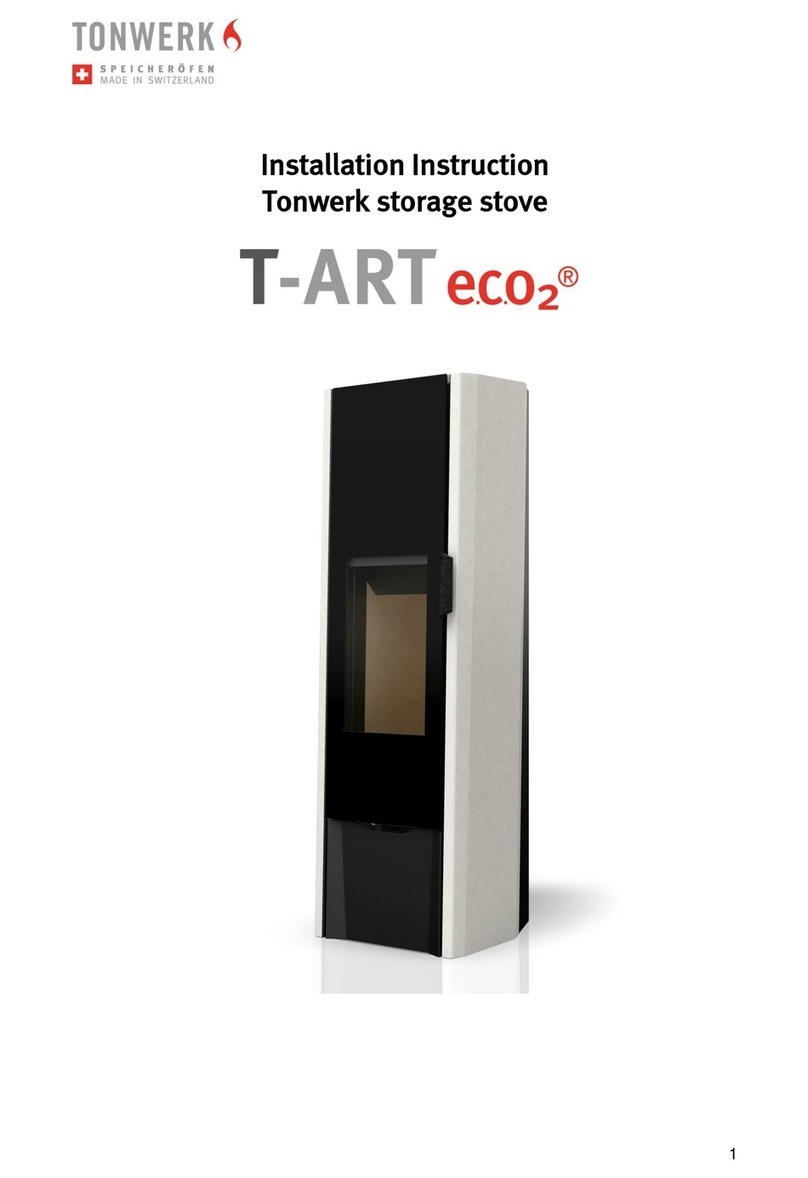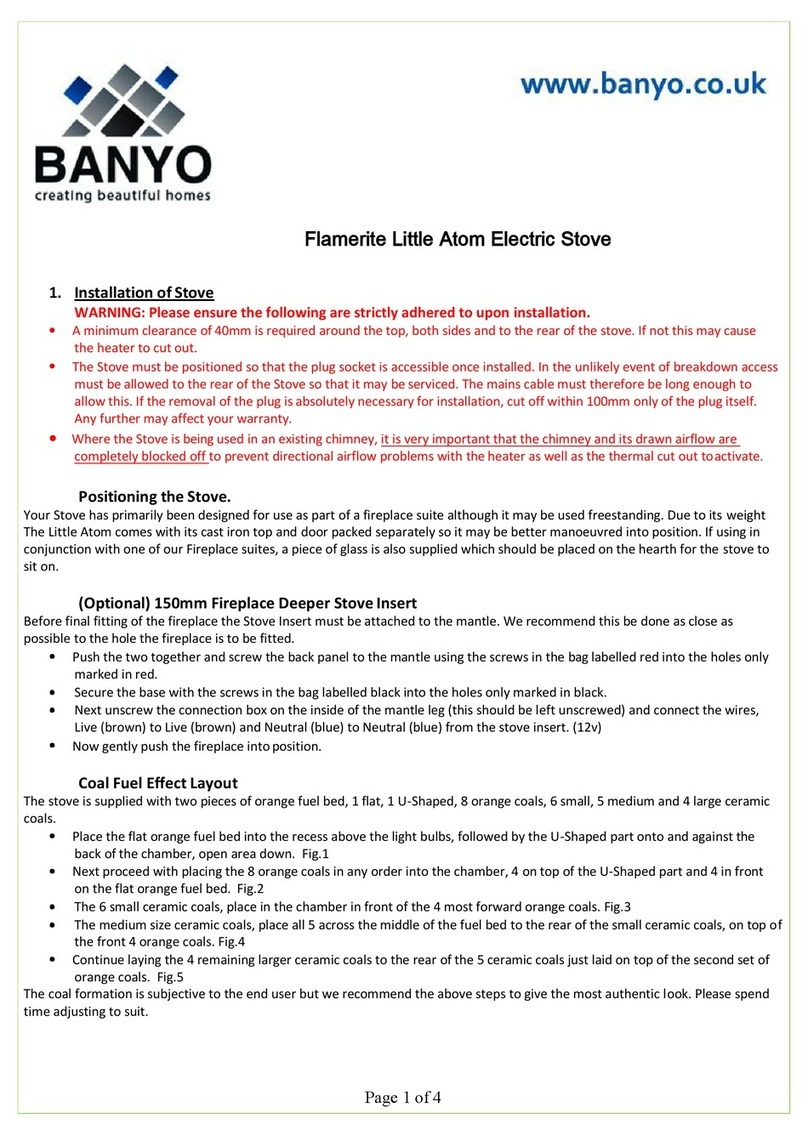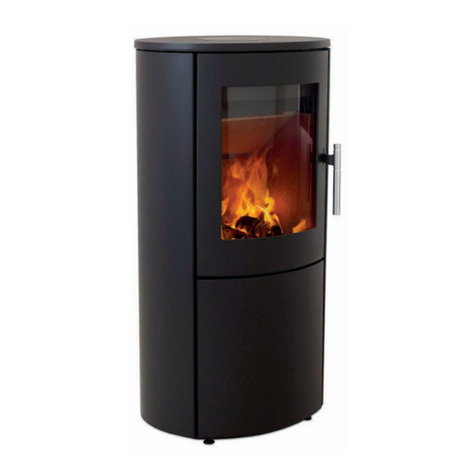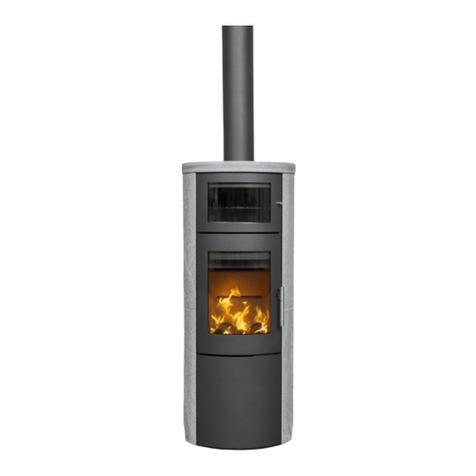
3
got so that any soot and condensation drops
into the stove itself rather than collecting on the
exterior surface of the stove. For connections to
chimneys that are run through ceilings, all natio-
nal and local regulations regarding distance to
flammable material must be followed. It is im-
portant that the chimney is fitted with roof sup-
port so that the top panel of the stove is not re-
quired to bear the entire weight of the chimney
(excessive weight may damage the stove).
Draft conditions
Poor draft may result in smoke being emitted
from the stove when the door is opened. The
minimum chimney draft to ensure satisfacto-
ry combustion in stoves of this kind is 11 PA.
However, there will still be a risk of smoke emis-
sion if the firing door is opened during power-
ful firing. The flue gas temperature at nominal
output is 246°C when expelled to an exterior
temperature of 20°C. The
flue gas mass flow is
4,7 g/sec. The chimney
draft is generated by the
difference between the high temperature of the
chimney and the low temperature of the fresh
air. The length and insulation of the chimney,
wind and weather conditions also have an effect
on the ability of the chimney to generate appro-
priate under-pressure.
If the stove has not been used in a while, check
that the chimney and stove are not blocked with
soot, bird nests, etc., before using it.
Reduced draft can occur
when:
- The difference in temperature is too small – due to
insufficient chimney insulation, for example.
- The outdoor temperature is too high – in sum-
mer, for example.
- No wind is blowing.
- The chimney is too low and sheltered.
- The chimney contains false air.
- The chimney and flue gas pipe are blocked.
- The house is too airtight (i.e. when
there is an
insufficient supply of fresh air).
- Poor smoke extraction (poor draft conditions)
due to a cold chimney or bad weather conditi-
ons can be compensated for by increasing the
airflow into the stove.
Good draft occurs when:
- The difference in temperature between
the chimney and outdoor air is high.
- The weather is fine.
First firing
The stove paint is fully cured from the factory,
but a minor unpleasant odour could still arise.
During the first firing, which should be carried
out using approximatly 1.24 kg. of wood, the
stoking door must be left slightly open and must
not be closed until the stove is cold. This is to
prevent the sealing rope sticking to the stove.
Fuel
Your new stove is EN approved for firing
with
wood fuel. You must therefore only
burn clean, dry
wood in your stove. Never
use your stove to burn
drifwood, as this
may contain a lot of salt which can damage both
the stove and the
chimney. Similarly, you must not
fire your
stove with refuse, painted wood, pres-
sure-impregnated wood or chipboard, as these
materials can emit poisonous fumes and smoke.
Correct firing using well seasoned wood provi-
des optimal heat output and maximum econo-
my. At the same time, correct firing prevents en-
vironmen-tal damage in the form of smoke and
emmissions and also reduces the risk of chim-
ney fires. If the wood is wet and inadequately
seasoned, a large proportion of the energy in
the fuel will be used to vaporise the water, and
this will all disappear up the chimney. Thus it is
important to use dry, well seasoned wood, i.e.
wood with a moisture content of no more than
18%. This is achieved by storing the wood for
1–2 years before use. Pieces of firewood with
a diameter of more than 10 cm should be split
before storing. The pieces of firewood should be
of an appropriate length (approx. 25–30 cm) so
that they can lie flat on the bed of embers. If you
store your wood outdoors, it is best to cover it.
Examples of fuel values of different woods
Fuel type / number of cubic metres per 1,000
litres of oil
Oak Beech Ash Birch Elm
Common
Spruce
7,0 7,0 7,2 8,0 8,9 10,4
- The wind is blowing strongly.
- The chimney is of the correct height: at
least 4.00 m above the stove and free of the
roof ridge.
















